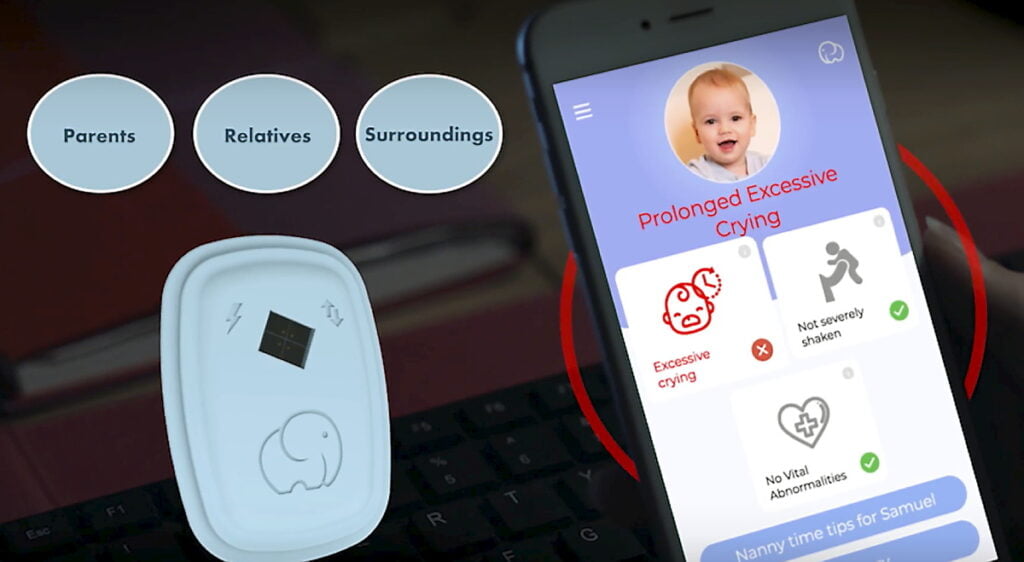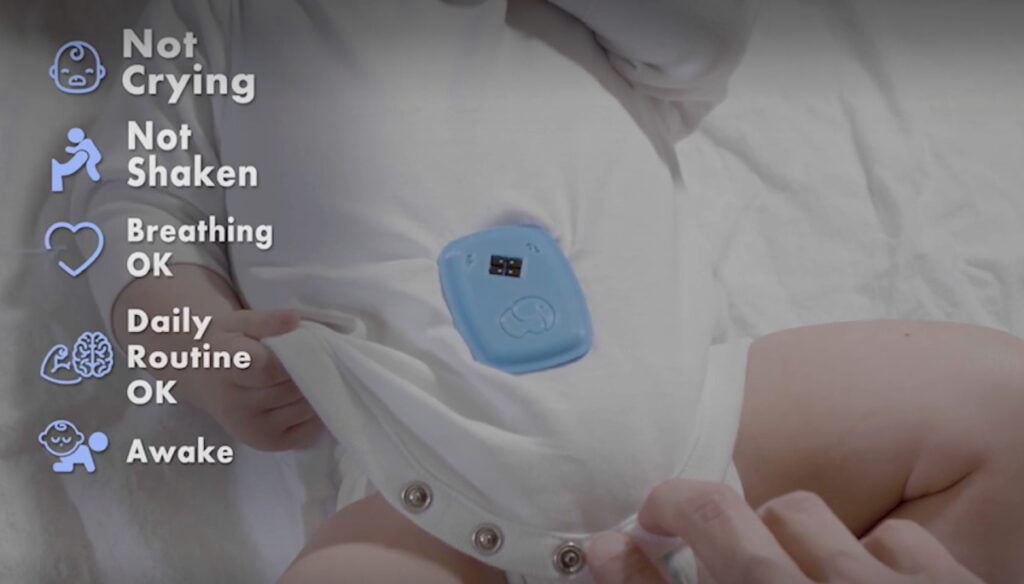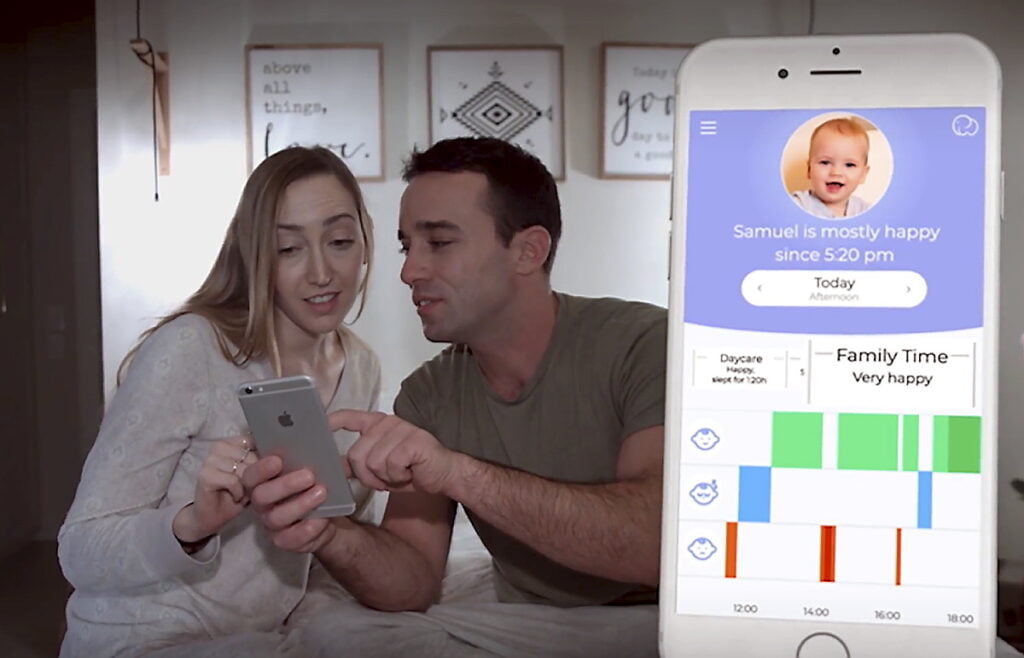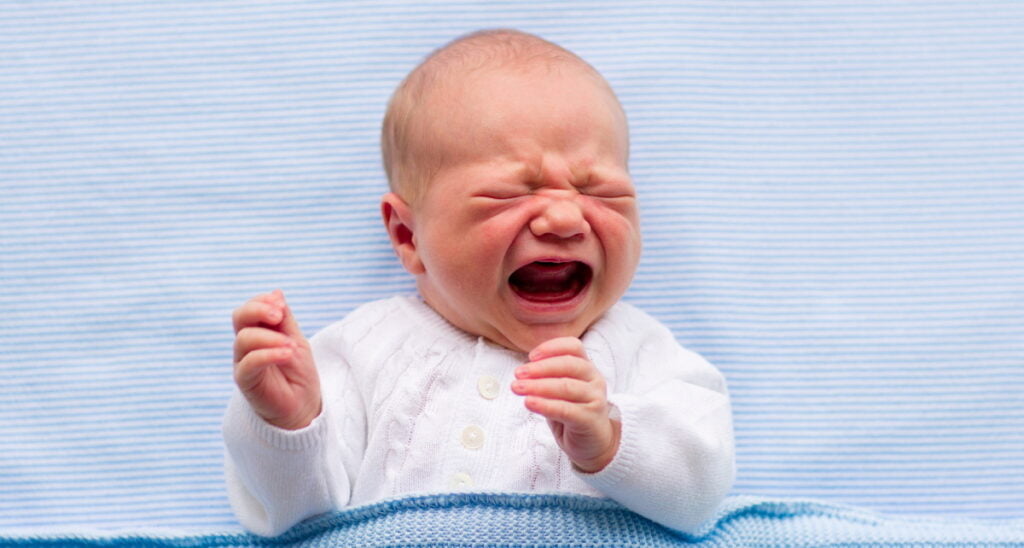It learns little one’s behavior patterns and messages parent’s smartphone with updates
Parents will soon be able to track their baby’s activity 24/7 using an AI (artificial intelligence) device that clips onto their clothes and connects to a smartphone.
It uses deep learning algorithms to learn each baby’s individual habits, noises, and daily routine . . . and to tell parents WHY their baby is crying. Is he or she hungry, in pain, or tired? The device can tell the difference.
It also provides a real-time lifesaving alert if something is seriously wrong, and records the baby’s long-term emotional and developmental story.
The device fits in the palm of an adult hand and is powered by a narrow neural network – algorithms that identify behavior patterns – personalized to each baby, which processes data from sound and motion sensors.
“Most people are surprised to hear the neural network is so small because when they think of neural networks they think of big computers,” Ami Meoded, Chief Marketing Office at LittleOne.Care, tells NoCamels.
“But this neural network can also recognize a baby’s reason for crying through various algorithms that are built into the system.

“We offer a solution that allows parents to provide babies with a safer environment, better quality of life, and care.”
He founded the company with Shauli Gur Arieh, an engineer who graduated from the IDF’s elite Talpiot program and served in the military intelligence tech supplier Unit 81. They were were inspired by Apple smartwatches because they “track everything going on around you” in a tiny device.
“We said, if you’re already using it as millennials and you track yourself in order to improve something in the next couple of months or years, why don’t you do something similar for your baby and give her a better quality of life for the rest of her life?” he says.
Sign up for our free weekly newsletter
SubscribeThe lightweight device clips onto the clothes of a baby, using AI to monitor their vital signs and to listen for everything from breathing patterns to gurgling to crying.
The device also checks the motion of the torso of the baby and the intensity of the baby’s movement (like when he is doing tummy time, rolling, crawling, sitting, trying to stand up or walk, or even sleeping). The moment something happens in real-time, the tool lights up.

“At the end of the day, we’re able to map and reflect on what happened today when you changed diapers or when you took a shower while your baby was asleep, or when you fed your baby or put music on for your baby or let him roll,” he says.
The goal is not only to alert parents to an emergency situation, but also to notify them on early indications, before it happens. While other tools tell parents when no breathing or heartbeat is detected, or when a baby has been left in a hot car, the LittleOne.Care platform aims to inform the parents before the emergency occurs. It also provides instructions for what to do in specific emergency situations.
The device also tracks the baby’s development, providing a clear picture of the baby’s life events, along with professional advice for parents.

“In the day-to-day, as parents, we want to make sure that our babies are safe. But in the long term, parents want to make sure they are not making mistakes with the development. They would like to track it.”
LittleOne.Care is attempting to create the biggest database in the world to help understand babies better and more specifically, to understand what different cries actually mean. Meoded says the goal is to get information from as many as 100,000 babies to be able to provide a thorough, comprehensive database for clinical trials, which are in the beginning stages at hospitals and clinics.
While the device is still in testing stages, the company has already begun sending it out to families in Israel and the US. They are specifically looking for families in Beverly Hills, California, and New York with infants up to four months old to try the product.
Related posts

Editors’ & Readers’ Choice: 10 Favorite NoCamels Articles

Forward Facing: What Does The Future Hold For Israeli High-Tech?

Impact Innovation: Israeli Startups That Could Shape Our Future




Facebook comments